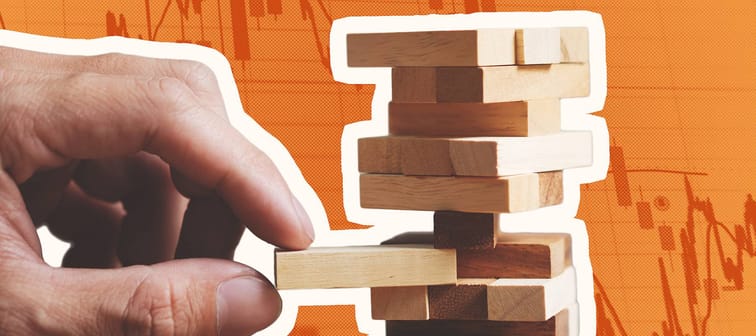Risk isn’t your enemy
You don’t need to be Warren Buffet or Jim Cramer to know markets don’t keep rising forever. At some point, values will fall.
Tom Trainor, managing director of Hanover Private Client Corporation, based in Toronto, Canada, says investors should expect the market to shed value somewhat regularly.
He says pullbacks, where the market declines by less than 10%, generally occur once a year. Corrections, which see a fall of 10-to-20%, happen approximately every two-to-three years. Bear markets, a drop of 20% or more, take place every five years or so.
“These things are completely expected,” Trainor says.
But newer investors don’t know to expect those events; and even many who’ve experienced stock volatility have short memories and panic when stock prices slip.
That can lead to panic selling, which destroys the value of investment portfolios. Learning to both expect and accept some market volatility is the first step in beating the temptation to sell low.
In fact, the volatility baked into the stock market is where most of its value comes from. This heightened risk is why returns on stocks are higher than those associated with bonds and other fixed income products.
“If you knew definitively you were going to get 7% or 8% every single year [from stocks], then nobody would invest in bonds. Everyone would invest in equities,” Trainor says. “It’s that risk premium that you’re trying to capture.”
If you and your financial planner have determined your portfolio needs to generate seven-to-10% each year for you to maintain your lifestyle, you’re not going to get that from bonds or other assets that don’t keep up with inflation.
Those levels of return require you to maintain a strong equity position and resist the temptation to sell during rough patches.
More: Investing for beginners
Meet Your Retirement Goals Effortlessly
The road to retirement may seem long, but with WiserAdvisor, you can find a trusted partner to guide you every step of the way
WiserAdvisor matches you with vetted financial advisors that offer personalized advice to help you to make the right choices, invest wisely, and secure the retirement you've always dreamed of. Start planning early, and get your retirement mapped out today.
Get StartedWhen do you need to invest in stocks?
Figuring out how much risk you’re comfortable with is a complex calculation. And it’s not a purely psychological decision.
Trainor says investors need to have both a financial goal and know their time horizon for needing an income from their investments.
“If it’s more than five, or hopefully more than 10 years, just invest in equities,” he says. “If you need the money back in two-to-three years, you probably just want to invest it in short-term bonds.”
Once the income targets have been worked out, it’s time to factor in your risk tolerance.
Maybe your adviser says your goals require a portfolio that’s heavy on stocks, but you’re the kind of person who won’t drink milk the day before it expires. If you’re that risk averse, don’t buy individual stocks because there’s too much chance you’ll start selling them as soon as prices start falling.
In this scenario, you and your adviser want to create a portfolio that leans more heavily on fixed-income assets; one that might only consist of 20% equities.
If that fits your post-retirement income needs, your exposure to the stock market should be manageable enough that the question of holding or selling doesn’t need to be asked.
Diversify and breathe easier

Index investing can be easier than picking stocks. Either way, though, your equity risk needs to be diversified by industry segment and country.
A well-balanced portfolio is a reliable hedge against market volatility, the experts say.
Trainor says the equity component of a diversified portfolio might include 15-to-20 different individual stocks that represent a mix of countries and industries. But, he adds, investing in major stock indices is a more modern and reliable way to invest.
Investing in ways that track the long-term performance of the TSX or Nasdaq indices is relatively safe. Trying to pick winners and losers with individual stocks, not so much.
So is jumping in and jumping out of individual stocks at just the right time to turn a profit and avoid losses.
“The research has shown continuously that nobody can effectively time the market with any degree of certainty,” he says. “You don’t get paid for single-stock risk.”
Instead, experts say your portfolio should be structured so that a market dip won’t require you to sell off your equities. And it should be multifaceted enough that the returns from its non-equity component (bonds or other fixed-income investments) can compensate for an extended period of sunken stock values.
“We don’t want to be forced to sell stocks in your portfolio during that period of time,” Trainor says. “Make sure your portfolio is properly structured so that you have the cash when you need it.”
— With files from Samantha Emann
More: Learn how to invest in stocks
Sponsored
Follow These Steps if you Want to Retire Early
Secure your financial future with a tailored plan to maximize investments, navigate taxes, and retire comfortably.
Zoe Financial is an online platform that can match you with a network of vetted fiduciary advisors who are evaluated based on their credentials, education, experience, and pricing. The best part? - there is no fee to find an advisor.






